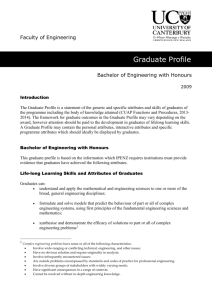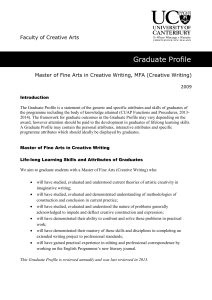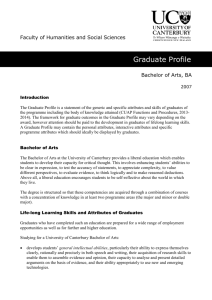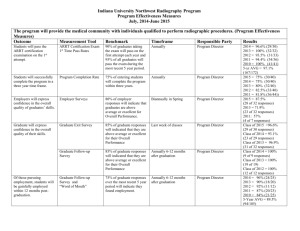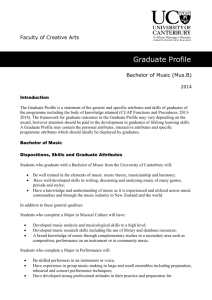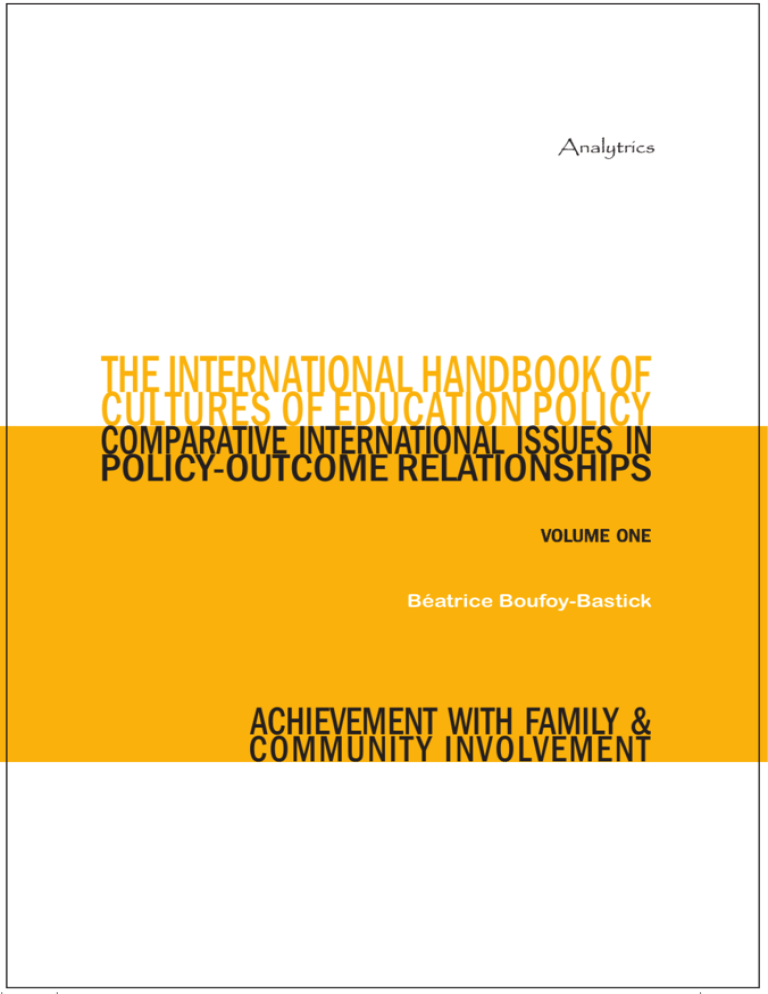
The International Handbook of Cultures of
Education Policy (Volume One)
International Board of Associate Editors
Dzintra Atstaja: Banku
Augstskola School of
Business and Finance, Riga,
Latvia
Khachatur Avalyan: Prime
Minister's office,
Government of the Republic
of Armenia
Richard B. Baldauf, Jr.:
School of Education,
Uni¬versity of Queensland,
Australia.
M. J. Best: Edgewood
College, Madison, Wisconsin
USA
Joseph Marr Cronin: Boston
University, Massachusetts,
USA
John Dwyfor Davies:
Department of Education,
University of the West of
England, Bristol, England
Gerardo Echeita: Faculty of
Education and Teacher
Education, Autonomous
University of Madrid (UAM),
Spain
Anthony Feiler: Special
Educational Needs,
University of Bristol,
England
Daniel Friedrich:
Department of Curriculum
and Teaching, Teachers
College, Columbia
University, New York, USA
Gallego Carmen Vega:
University of Sevilla, Spain
Professor Andrejs Geske:
Faculty of Education,
Psychology, and Art,
University of Latvia, Latvia
Nik Heerens: University of
Exeter, England
Kevin Davison: School of
Education, Australian
Catholic University,
Melbourne, Australia
Garry Hornby: School of
Sport & Physical Education,
University of Canterbury,
New Zealand.
Rollande Deslandes:
Department of Education,
Université du Québec, TroisRivières: Québec, Canada
Mieke Van Houtte: Ghent
University, Belgium
Dana Dobrovska: Czech
Technical University,
Prague, Czech Republic
Valerie J. Janesick:
University of South Florida,
Tampa, Florida, USA
International Board of Associate Editors
D. Bruce Johnstone: State
University of New York,
Buffalo, New York, USA
Abubakar Kateregga:
National University of
Rwanda, Rwanda
Eva Klemenčič: Educational
Research Institute,
Gerbiceva, Ljubljana,
Slovenia
Zvjezdana Prizmic Larsen:
Washington University, St.
Louis, Missouri, USA
Anthony J. Liddicoat:
Division of Education, Arts
and Social Sciences, School
of Communication,
International Studies and
Languages, University of
South Australia, Australia
Simona Kustec Lipicer:
University of Ljubljana,
Slovenia
Ljiljana Kaliterna Lipovčan:
Ivo Pilar Institute of Social
Sciences, Zagreb, Croatia.
Margaret Lloyd: Faculty of
Education, Queensland
University of Technology,
Brisbane, Australia
Joanna MadalińskaMichalak: University of Lodz,
Poland
Rob Mark: University of
Strathclyde, Scotland
Raquel-Amaya MartínezGonzález: Oviedo University,
Spain
Sergio Martinic: Faculty of
Education, Pontifical Catholic
University of Chile,
Santiago, Chile
Stephen McKinney: School
of Education, University of
Glasgow, Scotland
Dr. James McLellan: The
University of Brunei
Darussalam, Brunei
Piotr Mikiewicz: Sociology of
Education and Education
Policy Research Unit,
Department of Education,
University of Lower Silesia,
Poland
Gonçalo Canto Moniz:
University of Coimbra,
Reitoria, Coimbra, Portugal
Hilary Monk: Faculty of
Education, Monash
University, Melbourne,
Australia
Jesús Romero Morante:
Department of Education,
Cantabria University, Spain
Anabel Moriña Díez:
University of Seville, Spain
The International Handbook of Cultures of Education Policy
Reza Najafbagy: Islamic
Azad University, Tehran,
Iran
Janice R. Sandiford: Florida
International University,
Florida, USA
Romuald Normand: Ecole
Normale Supérieure, Lyon,
France
Hannu Simola: University of
Helsinki, Helsinki, Finland
Arevik Ohanyan: Eurasia
International University,
Yerevan, Armenia
Susan J. Paik: School of
Educational Studies,
Claremont Graduate
University, California, USA
Mauro Palumbo: Faculty of
Educational Sciences,
University of Genoa, Italy
Pat Petrie: Institute of
Education, University of
London, England
Vicente Chua Reyes, Jr.:
Nanyang Technological
University (NTU), Singapore
Luisa Ribolzi: National
Agency for the Assessment
of University and Research
Institutions (ANVUR), Rome,
Italy
Ellen Rosell: Troy University,
Alabama, USA
Alessandra Samoggia:
University of Bologna, Italy
Christine Skelton: University
of Birmingham, England.
Teresa Susinos: Faculty of
Education, University of
Cantabria, Santander, Spain
Jaak Umborg: Estonian
Aviation Academy, Tartu,
Estonia
Ilmars Viksne: School of
Business Administration
Turiba, Riga, Latvia
Theo Wubbels: Faculty of
Social and Behavioural
Sciences, Utrecht University,
Holland
Hong Xiao: University of
Canterbury, New Zealand
Irēna Žogla: University of
Latvia, Riga, Latvia
Andra Zvirbule-Berzina:
Latvia University of
Agriculture, Jelgava, Latvia
The International Handbook of Cultures of
Education Policy (Volume One): Comparative
International Issues in Policy-Outcome
Relationships – Achievement with Family
and Community Involvement
Béatrice Boufoy-Bastick
Editor
Analytrics
Strasbourg, France
Analytrics
7 Quai du General Koenig
67000 Strasbourg – France
Copyright © 2013 Béatrice Boufoy-Bastick. Some Rights
Reserved. "The international handbook of cultures of
education policy volume one" is licensed under a Creative
Commons Attribution -Noncommercial Share Alike
world-wide usage license. You are free to share - to copy,
distribute, display and perform the work. You are free to
remix, to make derivative works. However, you must
attribute the work in an accepted academic style - e.g.
citing the author(s), editor(s) and publisher. You may not
use this work for commercial purposes. If you alter,
transform or build on this work, you may distribute the
resulting work only under the same or similar license to
this one. See (http://creativecommons.org/licenses/by-ncsa/3.0/).
The International handbook of cultures of education
policy volume one: international issues in policy-outcome
relationships – achievement with family and community
involvement / Beatrice Boufoy-Bastick,
editor.
p. cm. -- (Culture of education series)
Includes bibliographical references and index.
ISBN - 979-10-90365-03-2 (hbk.)
1. Educational anthropology – Handbooks, manuals, etc.
2. Teachers – Training – Handbooks, manuals, etc.
3. Education – curricula – Handbooks, manuals, etc.
4. Education – Study and teaching – Handbooks,
manuals, etc. I. Boufoy-Bastick, Béatrice . II. Series.
III .Tchibozo, Guy, Series ed.
LC189.B68 2013
306.43 – dc23
Contents
International Board of Associate Editors .............................. ii
Contributing Authors .......................................................... xv
Structure and accessibility of Handbook ............................ xix
Glossary of Culturometric terms used ................................ xxi
Preface ............................................................................. xxv
Volume One
Section 1 ............................................................................. 1
Policy Meanings and Uses of Achievement
Chapter 1 ............................................................................ 3
Gender Polemics, Achievement and the Policy-Research Gap:
The Misalignment and Alignment of Stakeholder Positionalities
Within a Global Education Policy Field and a Context of
Neoliberal Governance
Wayne J. Martino & Goli Rezai-Rashti
Chapter 2 .......................................................................... 39
Armenian Higher Education Developments: Issues, Challenges
and Opportunities
Kristine A. Antonyan
Chapter 3 .......................................................................... 59
How to Rebuild a Secondary School: Space, Knowledge and
Education
Joana Marques, Luisa Veloso & João Sebastião
vii
The International Handbook of Cultures of Education Policy
Chapter 4 ......................................................................... 103
Across and Within-School Variation in New Zealand Secondary
Schools
Camilla Highfield
Chapter 5 ......................................................................... 121
Rethinking School Readiness and Transition Policy and Practice
in Early Childhood Education (ECE): A Whole Schooling
Framework
Lara Fridani & Joseph Seyram Agbenyega
Chapter 6 ......................................................................... 155
Building Local Networking in Education? Decision-Makers’
Discourses on School Achievement and Dropout in Portugal
Helena C. Araújo, Florbela Sousa, Armando Loureiro, Isabel
Costa & José Portela
Chapter 7 ......................................................................... 187
School Achievement in Urban and Rural Areas in Croatia: Is the
Quality of Education Equal for All?
Josip Burusic, Marija Sakic,Toni Babarovic & Ivan Devic
Section 2 .......................................................................... 219
Policy for Family Involvement for Formal Education
Chapter 8 ......................................................................... 221
Teenagers At-Risk of Dropping Out of High School. Parents’ and
Teachers’ Views on Family Involvement
Raquel-Amaya Martínez-González, Lucía Álvarez-Blanco, & Mª
Henar Pérez-Herrero
Chapter 9 ......................................................................... 259
Teachers’ Reflections on Parental Involvement in Emergent
Literacy Development in Rwanda
Pierre Canisius Ruterana
viii
Contents
Chapter 10 ...................................................................... 283
Home-School Agreements in England: Symbolic value and
contractual relationships between school managers, parents
and pupils
Howard Gibson
Chapter 11 ...................................................................... 321
Homeschooling: The Rising Parent Entitlement
Karen Freeman
Chapter 12 ...................................................................... 337
Upbringing Process Quality and Cooperative Learning in Family
within Latvian Transforming Society
Dace Medne
Chapter 13 ...................................................................... 373
Parent Empowerment: Examining Parental Attitudes of School
Systems
Julian Brown
Chapter 14 ...................................................................... 403
The social role of Grandparents: Values, Attitudes, Purposes
and Behaviours
Giulia Cavrini & Liliana Dozza
Section 3 ......................................................................... 421
Community Involvement and Education Policy
Chapter 15 ...................................................................... 423
Improving Schools Through Democratic Stakeholder
Involvement
Martin Retzl & Roland Ernst
Chapter 16 ...................................................................... 437
The “Free” Child – Organized After School Activities as the
Upbringing of a Community
Ann S. Pihlgren & Malin Rohlin
ix
The International Handbook of Cultures of Education Policy
Chapter 17 ....................................................................... 477
Exercising an Ethic of Care: Mississippi School Leaders'
Responses to Hurricane Katrina
Judith A. Gouwens & Donna Lander
Chapter 18 ....................................................................... 495
Service learning in a Croatian University: A Possibility for
Effective Partnership with Community Stakeholders
Nives Mikelic Preradovic, Sanja Kisicek & Damir Boras
Chapter 19 ....................................................................... 521
Innovation and Cooperation Between Business and
Universities: Comparative Analysis and Educational
Implications
Cajide Val, J. & García Antelo, B.
Chapter 20 ....................................................................... 557
The Socioeconomic Impact of a HEI for a Local Economy
Joana Fernandes, Jorge Cunha & Pedro Oliveira
Chapter 21 ....................................................................... 577
The Higher Education Premium as a Measure of Regional
Development
Joana Fernandes, Jorge Cunha & Pedro Oliveira
Volume Two
Section 4 .......................................................................... 595
Economic influences and Education Policy
Chapter 22 ....................................................................... 597
Student mobility in European Higher Education Area: An
Example of Equity?
Luisa Cerdeira & Tomás Patrocínio
Chapter 23 ....................................................................... 617
The Impact of the Brain Drain on Sub-Saharan Africa
Development
Kingsley Banya
x
The International Handbook of Cultures of Education Policy
Ivan Devic: Institute of
Social Sciences Ivo Pilar,
Zagreb, Croatia
Liliana Dozza: Faculty of
Education, Free University
of Bolzano, Italy
Judith A. Gouwens:
Roosevelt University, USA
Camilla Highfield: The
University of Auckland,
New Zealand
Soudabeh Jalili: Islamic
Roland Ernst: University of Azad University, Tehran,
Iran
Vienna, Austria
Joana Fernandes:
Polytechnic Institute of
Bragança, Portugal
Joana Marques: University
Institute of Lisbon (CIESIUL), Portugal
Fiona Forbes: The
Australian Special
Education Principals
Association, Australia
Hants Kipper: Tallinn
University of Technology,
Estonia
Karen Freeman: Chicago
State University, USA
Sanja Kisicek: University
of Zagreb, Croatia
Lara Fridani: Monash
University, Canada
Damjan Lajh: Educational
Research Institute,
Ljubljana, Slovenia
Sylvie Gagnon: University
of Canterbury, New
Zealand
Floris Lammens: Royal
Conservatoire Antwerp,
Belgium
Beatriz García Antelo:
University of Santiago de
Compostela, Spain
Donna Lander: Jackson
State University, USA
Philip Garner: University
of Northampton, England
Howard Gibson: Bath Spa
University, England
Armando Loureiro:
University of Trás-osMontes and Alto Douro,
Portugal
xvi
CHAPTER 21
THE HIGHER EDUCATION PREMIUM AS A
MEASURE OF REGIONAL DEVELOPMENT
Joana Fernandes, Jorge Cunha & Pedro Oliveira
Polytechnic Institute of Bragança, Portugal
University of Minho, Portugal
ICBAS, University of Porto, Portugal
joana@ipb.pt
jscunha@dps.uminho.pt
pnoliveira@icbas.up.pt
Abstract
Until the 1990s, studying the impacts of Higher Education
Institutions (HEI) mostly focused on short-term impacts,
i.e. the economic approach. In recent years, there has been
a growing interest on the long-term impacts of higher
education, especially concerning human capital.
The human capital analysis (Schultz, 1961; Becker, 1993)
estimates the increase in productivity and incomes for
individuals due to the knowledge and skills they acquired
from attending a HEI. Following these authors, Bluestone
(1993) suggested that the creation of human capital for
higher education graduates can be estimated by assuming
that wages are correlated only with the number of official
school years.
577
Cultures of Education Policy: Community Involvement and Education Policy
In this paper, the human capital of a higher education
graduate, in a deprived region of Northeast Portugal has
been determined considering that the education premium is
due solely to the number of years in higher education.
It was also possible to determine that the direct
stakeholders, namely the government and the students,
have different values and attitudes towards the higher
education premium.
Keywords
Economic impact – Higher Education Institution – Human
capital - Stakeholders
Introduction
Until the 1990s, studying the impacts of Higher
Education Institutions (HEI) mostly focused on short
term impacts, i.e. the economic approach. In recent
years, there has been a growing interest on the long
term impacts of Higher Education (HE), especially in
what regards determining the creation of human
capital.
Although several authors (e.g. Altinok, 2007; Becker,
1983; Desjardins, 2003) recognized the existence and
creation of human capital on individuals that invest in
a higher education, they also recognized that this
impact is very difficult to quantify. Usually, whenever
long term impacts were analysed, only the
identification of those impacts was made and no
quantification was attempted.
Following the econometric equation developed by
Mincer (1958), establishing a relationship between
wage variations and various factors, such as the
number of official school years, family background and
personal skills, other authors (e.g. Becker, 1993) have
presented ways to determine this impact. Bluestone
(1993) presented a more straightforward method,
578
The Higher Education Premium as a Measure of Regional Development
suggesting that one can establish the value of human
capital for the HE graduates assuming that the higher
wages are correlated solely with the number of official
school years. This is a simplified way to determine
human capital, through its more visible form, called
education premium.
In this study we determined the human capital of
individuals that graduated from a Portuguese HEI,
considering that the education premium (the increased
wage when compared with the graduates of secondary
education) is due only to the number of years they
attended the institution. With this assumption, and
following Bluestone´s model, it was possible to
determine the education premium of students that
decide to obtain a higher education degree and remain
in a certain region.
To deepen the analysis the stakeholders involved were
also considered (Freeman & Reed, 1983: 91).
Although, different stakeholders have different
considerations,
values
or
attitudes,
we
also
distinguished between direct and indirect stakeholders.
The direct stakeholders are the graduates and the
government; and the indirect stakeholders are the
communities where the graduates will live as well as
their parents (Dick, 1997).
Therefore, first a brief review of the literature on
human capital is presented; then Bluestone’s model is
revisited and, finally, the case of a Portuguese higher
education institution is described.
1. Human Capital
The human capital theory is a concept that appeared
in the 18th Century, with the basic premise that the
people that constitute a given society are a form of
capital in which the society can invest in the same way
as they invest in physical capital (Williams & Swail,
579
Cultures of Education Policy: Community Involvement and Education Policy
2005). This theory was greatly developed in the 1960s
by Schultz (1961) and Becker (1993).
The human capital analysis intends to determine the
higher education institutions’ impact under the supplyside. It calculates the increase in productivity and
income for individuals due to the acquired
competences, knowledge and skills from attending a
HEI. Becker (1993) defined human capital as the
economic effects upon jobs and income due to the
investment made in education and training.
The human capital theory is concerned with the effects
of education upon the overall economy, and, in
particular, upon individuals’ earnings. Its major
constrain is the implicit assumption that education has
a similar effect upon all individuals just as the money
factor does. The main principle is that education
increases efficiency and, as such, the lifelong incomes
(Nakabashi & Figueiredo, 2008). This theory sustains
that there is a correlation between human capital and
economic growth, i.e. higher levels of education can
bring higher earnings (Altinok, 2007; Becker, 1983;
Desjardins, 2003, Monks, 2000; Perna, 2003;
Sudmant, 2002). Becker (1993: 12) reinforces that
“probably the most impressive piece of evidence is
that more highly educated and skilled persons almost
always tend to earn more than others”.
Through the use of income functions, developed from
Mincer’s equation, there has been an attempt to
determine the relationship between education and
earnings, and the educations’ return rate (Becker,
1993). These earnings are a measurement of the
increased efficiency of the individual and, as such, of
its contribution towards economic development
(Williams & Swail, 2005; Strayhorn, 2005).
Although the existence of benefits from investing in
human capital is largely recognized, it is still very
580
The Higher Education Premium as a Measure of Regional Development
difficult to accurately determine the results that arise
from such investment. It is possible to have an idea of
the dimension of that impact by estimating the
increase in regional earnings that result from higher
education (Sudmant, 2002; Williams & Swail, 2005).
Theoretically, earnings are determined by the
individual’s productivity and it is expected that
differences in productivity are due to personal
differences in educational investments. As such, it is
expected that additional school years increase labour
productivity (Jefferson College, 2003; Perna, 2003).
In terms of measurement, the average school years of
the labour force has been used as a good proxy for
human capital. Formal education is, from all forms of
education, the one that has the strongest relative
influence in the economic results (Becker, 1993;
Desjardins, 2003).
Education as an investment is analysed through the
relation between benefits and costs, being this relation
the concept of return on investment – ROI (Clarck et
al., 1998). Even though the cost of studying at a
higher education level is high, the return on that
investment is expected to be high enough to offset
that cost (Bryant, 2001). However, those benefits can
take years to actually happen after graduation. That
time period is often difficult to determine and most of
the studies assume that students find a job
immediately after graduation, which is not supported
by the data provided by the Portuguese National
Statistics Institute.
The economic value of higher education is reflected on
the education premium obtained by workers with a
higher degree (Arizona State University, 2003). The
education premium is understood as the earning
differential that a graduate from a HEI earns above
the earnings of a Secondary Education (SE) graduate.
581
Cultures of Education Policy: Community Involvement and Education Policy
Also, individuals with higher educational levels can
obtain jobs faster and, as such, have more and better
job experiences, have higher job stability, have more
capabilities and knowledge to apply in a labour
environment, are more productive and have higher
wages (Bryant, 2001; Clarck et al., 1998; Thomas &
Zhang, 2004).
Blackwell et al. (2002) argue that there is a shortage
of data when one tries to estimate human capital,
according to higher lifelong returns, specifically
because they do not incorporate the innate differences
of capabilities or skills that individuals have. In fact, it
is likely that not all earnings associated to a higher
education degree are due to education itself, but also
to the innate capabilities of students (Becker, 1993;
Lindahl & Regnér, 2002). However, there are still no
developments in this area, and, as long as there is no
evidence on which acquired skills or competences
make the difference, the number of school years is still
a good proxy. Therefore, a way to determine the
human capital value in the market is by correlating the
individuals’ incomes with their level of knowledge and
number of school years.
1.1 The Bluestone Model
Bluestone (1993) is referred to as the pioneer on
studies about HEI’s long term impacts, or supply-side
impacts, in regions in which the human capital has a
great importance. Bluestone’s model was first
developed and applied in the Boston region to
estimate the impact of the Massachusetts University.
This study analysed the institution’s impact according
to three economic contributions to the region where it
is located: “(1) the additional income that
UMass/Boston students generate within the state as a
result of their university education (2) the added state
income and sales taxes revenues generated for the
582
The Higher Education Premium as a Measure of Regional Development
state government as a result of the additional income
earned by these students, and (3) the “export base”
income and tax revenues generated from non-resident
tuition, fees, and living expenses; gifts and
unrestricted funds from non-Massachusetts sources;
student federal grants-in-aid; non-Massachusetts
sponsored grants and contracts; and federal
endowment income (Bluestone, 1993: 3).”
Bluestone estimated future potential earnings of the
higher education graduates that remain working in the
region as a measurement of the long term economic
impact of higher education.
Although there are some criticisms to Bluestone’s
model (such as, that it does not control the innate
capabilities that workers have;
that it cannot
determine if a worker earns more because he has a
certain level of education or simply because he is
intrinsically a better worker; and also because it is
necessary to guarantee that the graduates remain in
the region) none of the more recent models
incorporated the differences associated with individual
capabilities.
The main innovation of this approach was the attempt
to estimate not just the total value of the institution
but the enhanced regional economic activity as a
result of the educational institution’s activities.
Bluestone was able to estimate the human capital
creation by using the wage differential as a proxy. It
also determines the impact upon government
revenues by comparing the amount spent by the
government in financing the institutions and the
amount received in the form of taxes paid, as a result
of the additional income of the graduates from that
HEI. If graduates earn more they will also spend more
and, as such, the regions will benefit from a higher
level of business activity, also benefiting the
583
Cultures of Education Policy: Community Involvement and Education Policy
government as it will receive more taxes (on income
or sales). Bluestone (1993) determined if the
government’s investment in higher education has a
satisfactory rate of return, by analysing the
government’s
spending
and
the
government’s
revenues in the form of taxes over income and sales.
Following the sequel, Bluestone’s model is developed
in two separate parts. The first concerning the
students’ ROI; and the second the ROI of the
government.
1.1.1 Return On Investment (ROI) in the graduates’
perspective
Theoretically, the rational individual compares the
future earnings of his educational investment and
chooses the educational program that will maximize
the return of the investment (Becker, 1993).
This perspective, followed by other authors (e.g.
Perna, 2003; Rubi, 1995; Strayhorn, 2005; Thomas &
Zhang, 2004), estimates the difference in present
value of the lifelong earnings between a higher
education graduate and individuals with different
educational levels. Usually the comparison is made
between higher education and secondary education
graduates. To accurately estimate the value, it is
necessary to consider the opportunity cost that a
graduate must endure during his degree, by not
earning any income, and the cost of studying, such as
tuitions, books, and other costs.
1.1.2 Return On Investment (ROI) in the government
perspective
Bluestone’s model considers another step in the
determination of human capital. He considers the
education premium for graduates and he also
584
The Higher Education Premium as a Measure of Regional Development
estimates the return on investment for the
government. The latter is obtained by estimating the
present value of the differential in taxes received over
income and sales during the working life of a HE
graduate when compared with an individual with only
SE. This result is then compared with the investment
the government made in the higher education student
throughout his degree, usually of four years, which is
often determined by dividing the HEI’s annual budget
by the number of students. From this comparison the
internal rate of return is thus obtained (Guichard &
Larre, 2006; Rubi, 1995).
In the estimation of the return from taxes over income
it was assumed that, if all the other conditions remain
the same, those that earn more will pay more taxes
(Arizona State Board of Directors for Community
Colleges, 1995). In the same line of thought those
that earn more will have more expenses and spend
more. A simple way to estimate this is by estimating
the taxes over the available income during the number
of years considered.
2. The case of the Portuguese Polytechnic
Institute of Bragança
According to Bluestone’s model, as presented above,
in order to estimate the human capital impact of an
HEI in a specific region it is necessary to first establish
the earning differential between HE graduates and
secondary school graduates and, then, the present
value of the taxes differential paid during their working
life.
In order to present a clearer example of this method,
a region and a HEI from the Northeast of Portugal
were selected. The region was Bragança and the HEI
was the Polytechnic Institute of Bragança (in
Portuguese, IPB).
585
Cultures of Education Policy: Community Involvement and Education Policy
The value-base considered were the average wages
for SE and HE degrees, in Bragança, in 2007,
respectively 816.61€ and 1,214.79€, obtained from
the National Statistics Institute.
2.1.1 Return On Investment (ROI) in the graduates’
perspective
To determine the return on investment of HE
graduates it was necessary first of all to estimate the
earning premium of HE graduates. This can be done
by estimating the wage differential during 40 years of
labour, assuming that this differential is only due to
the different educational levels. Other assumptions
were made in order to allow future comparisons with
other studies, such as an equal 40 year labour period
and also that, in both cases, graduates will find a job
as soon as they graduate, when it is known that
usually there is a search period for the first job of 8 to
15 months in Portugal (table 1).
Table 1 – Present value of lifelong net income of both
educational levels
(3) (5) Update factor
(2)
Real
Present
i -40years×12 º
(1)
ª
Average monthly wage update «1 (1 12)
value
»
Monthly wage
i
(14 months)
rate(am) «
» (2x5)
¼
12
(i) ¬
468,010
HE graduate 1,214.79 €
1,417.26 €
2.0%
330
€
314,607
SE graduate 816.61 €
952.71 €
2.0%
330
€
(am) Average inflation rate of 3.0%, and a nominal interest
rate of 5.0% (Data available in the Portuguese Central
Bank).
Table 1 describes the lifelong earnings of both
educational graduates. A HE graduate will receive,
during his working life, in present value, 468,000
586
The Higher Education Premium as a Measure of Regional Development
euros; while a SE graduate will earn 314,600 euros
during the same time period.
To obtain the education premium, it is necessary to
estimate the costs that a HE graduate will bear during
his four years of degree, assuming that he will not fail
any year (table 2). All the values were based on the
case of a student attending an HEI in the North of
Portugal, specifically an IPB student, according to an
extended survey carried out in 2007 (Fernandes,
Cunha & Oliveira, 2008).
Table 2 – Cost of a higher education degree
(2)
(5) Update factor
(6)
(1)
(3)
(4)
4 yearsu12 º Total cost
Monthly
i
ª
Monthly
Monthly Annual «1 (1 12)
» in present
expenses
opportunity
fiscal cost «
i
12
» value
(except room
¼
cost
benefit (1+2-3) ¬
and board)
(4x5)
HE
graduate
952.71 €
257 €
54 € 1.156 €
46
53,288 €
Table 2 shows that an individual that studies in a HEI
for four years will spend, in present value, 53,288
euros. This calculation included: (a) the opportunity
cost of attending a HE degree, corresponding to a
secondary education wage that is lost every month;
(b) the monthly expenses directly related with the
attendance of the degree, such as tuitions and books.
The expenses with room and board were excluded
since a secondary education graduate will also have
these expenses; (c) the fiscal benefit was deducted,
since Portugal has an annual tax reimbursement policy
of 645 euros per student.
The education premium, or the earning differential
between a HE graduate and a SE graduate, is shown
on table 3.
587
Cultures of Education Policy: Community Involvement and Education Policy
Table 3 – Education premium of a HE graduate
HE graduate
(1)
(2)
Lifelong income differential
HE cost
(40 years)
(four years)
153,400 €
53.288 €
(3)
Education Premium
(1-2)
100,100 €
Table 3 shows that the net income differential in 40
years of working life, between a HE graduate and a SE
graduate, reaches 100,100 euros, when both live in
Bragança. The internal rate of return for a higher
education graduate that will remain in Bragança after
graduation, without considering increasing differential
incomes over the years, is 10.3%.
On the stakeholders’ analysis, it was possible to
question the students that will graduate and obtain a
higher education degree about their perception on the
education premium. Students do not perceive the
government contribution to their degrees as important
as their families’ efforts.
3.2.1 Return On Investment in the government’s
perspective
Previously the educational premium for HE graduates
was determined. It is now necessary to determine the
taxes over the additional income in order to estimate
the return on investment on the government’s
perspective. This can be done by comparing the
amount that the government spent with each
student’s graduation and the taxes it will receive
during the graduates working life.
The application of Bluestone’s vision implies that a
student will take four years to graduate and will never
fail any year, as such the government will bear only
four years of higher education.
588
The Higher Education Premium as a Measure of Regional Development
The income taxes paid by a HE graduate and by a SE
graduate are shown in table 4.
Table 4 – Taxes paid by higher education and secondary
education graduates
(1)
Average monthly
Income (14 month)
(2)
Tax
rate
(3)
Monthly
tax
(1x2)
HE graduate
1.417,26 €
18.49%
262 €
SE graduate
952,71 €
16.04%
153 €
(5) Update factor
(6)
ª1 (1 i )-40years×12 º
Taxes
paid
12
«
»
i
(3x5)
«
»
¬
¼
12
330
86,516 €
330
50,466 €
As can be observed in table 4, for 40 years of work, a
HE graduate will pay 86,500 euros in income taxes at
present value (at a tax rate of 18.48%); while a SE
graduate will pay almost 50,500 euros (at a tax rate of
16.04%). The differential tax paid is, in present value
terms, 36,050 euros.
Table 5 shows a summary of earnings; taxes paid, and
net income of a HE graduate and a SE graduate.
Table 5 – Earnings and taxes paid during 40 years of
working life
Lifelong income
Taxes paid
Net income
HE graduate
468,010 €
86,516 €
381,500 €
SE graduate
314,607 €
50,466 €
264,140 €
The figures show that a HE graduate will receive
468,000 euros during his working life, which
corresponds to 153,000 euros more than a SE
graduate. However, after taxes, the income net value
is 117,350 euros.
Since the government spends, during the four years of
graduation 13,600 euros per student, this means that
the government has a return on its investment of
589
Cultures of Education Policy: Community Involvement and Education Policy
21,000 euros (table 6). In fact, the government’s rate
of return reaches 9.4%, which is considerably high for
a public investment.
Table 6 – Return on investment
(1)
Tax paid
HE graduate
86,516 €
(2)
Tax
differential
36,050€
(3)
Cost per
student
13.600 €
(4)
Government’s
return (2-3)
22,450 €
Although the analysis supports that the budget
granted to the HEI is an investment, due to the return
rate, the government sustains that the budget is a
cost it has to bear every year.
Conclusion
In the analysis of the economic impact on the supplyside, the human capital created due to the higher
education obtained by Portuguese students, was
estimated.
Following Bluestone’s model, it was possible to
determine
that the
government recovers
its
investment during the active life of a HE graduate. In
fact, the government will receive an additional income
tax of 36,000 euros per HE graduate, and achieve an
internal rate of return of 9.4% on its investment in
education.
On the other hand, a HE graduate from the IPB can
expect an education premium of 100,100 euros
(64,000 euros after taxes) during his working life,
when compared with a SE graduate.
The numbers of students that graduate from the IPB
and remain in the region of Bragança every year must
also be considered. In 2007 this number reached 462
graduates. It is possible to determine that the
590
The Higher Education Premium as a Measure of Regional Development
graduates from just a specific year, 2007, will pay
10.4 million euros to the government as taxes, and
will benefit from an education premium of 30 million
euros during their active life.
Even though human capital analysis relates a given
population’s higher education degree with the region’s
economic growth, the Portuguese government goes on
with its policy of continuous reduced budgets, not
considering that the constrains on educational
institutions will have reflections upon graduates, due
to their perception of fewer resources, lower
scholarships and even higher rates of dropouts, that
will restrain the level of growth of the region.
References
Altinok, N. (2007). Human capital quality and
economic growth. Institute for Research in the
Sociology and Economics of Education, working
paper
DT
2007/1.
Available
at
<http://halshs.archives-ouvertes.fr>.
Arizona State Board of Directors for Community
Colleges (1995). The state’s return on investment
in Arizona Community Colleges. Institutional
Effectiveness Series: Return on Investment
Measure, May 1995. Phoenix. ERIC ED 382261.
May-1995.
Arizona State University (2003). The contribution of
Arizona State University to the Arizona economy,
FY 2002. Centre for Business Research, L. William
Seidman Research Institute, Arizona State
University, April-2003.
Becker, G. (1993). Human capital: a theoretical and
practical analysis with special reference to
education. 3ªed. New York: The University of
Chicago Press. ISBN 0-226-04120-4.
Blackwell, M., Cobb, S. & Weinberg, D. (2002). “The
economic impact of educational institutions:
issues and methodology”. Economic Development
Quarterly, 16(1), 88-95.
591
Cultures of Education Policy: Community Involvement and Education Policy
Bluestone, B. (1993). UMASS/Boston: an economic
impact analysis. University of Massachusetts,
Boston. January 93. EDRS. HE 026 389. ED 356
733.
Bryant, A. (2001). The economic outcomes of
community college attendance. ERIC Digest. ERIC
Clearinghouse for Community Colleges Los
Angeles CA. ED467981. September, 2001.
Clarck, C., Feng, L. & Stromsdorfer, E. (1998). The
Economic and social impact of Washington State
University. Washington State University, March1998.
Available
at
<http://www.wsu.edu/NIS/EconomicImpact.html
>.
Desjardins, R. (2003). “Determinants of economic and
social outcomes from a life-wide learning
perspective in Canada”. Education Economics,
11(1), 11-38.
Dick,
B.
(1997).
Stakeholder
analysis
[On
line].
Available
at
http://www.scu.edu.au/schools/gcm/ar/arp/stake
.html
Fernandes, J., Cunha, J. e Oliveira, P. (2008). Instituto
Politécnico de Bragança: uma caracterização
socioeconómica do ano 2007. Biblioteca Digital do
IPB. DCE - Relatórios Técnicos/Científicos.
Available
at
<http://hdl.handle.net/10198/1214>.
Guichard, S. & Larre, B. (2006). Enhancing Portugal’s
human capital. OECD Economics Department
Working Papers. Nº 505, 28-Jul-2006 (OECD,
Paris).
Available
at
<http://www.sourceoecd.org/>.
INE – Instituto Nacional de Estatística, I.P. (2008).
Anuário estatístico de Portugal 2007. Lisboa:
Instituto Nacional de Estatística, I.P. ISBN 978972-673-953-1.
Jefferson College (2003). The economic impact of
Jefferson College on the Community and the
State FY 2002. Jefferson College, Office of
Research e Planning, May 21-2003.
592
The Higher Education Premium as a Measure of Regional Development
Lindahl, L. & Regnér, H. (2002). College choice and
subsequent earnings – results using Swedish
sibling data. Stockholm University, Swedish
Institute for Social Research (SOFI), February2002.
Mincer, J. (1958). “Human capital and economic
growth”. Journal of Political economy, August
1958, 66(4), 281.
Monks, J. (2000). “The returns to individual and
college characteristics – evidence from the
national longitudinal survey of youth”. Economic
of Education Review, 19(3), 279-289.
Nakabashi, L. & Figueiredo, L. (2008). “Mensurando os
impactos directos e indirectos do capital humano
sobre o crescimento”. Economia Aplicada, 12(1),
151-171.
Perna, L. (2003). “The Private Benefits of Higher
Education: An Examination of the Earnings
Premium”. Research in Higher Education, 44(4),
August 2003.
Rubi, D. (1995). The state’s return on investment in
the Arizona Community Colleges. Arizona State
Board of Directors for Community Colleges.
Institutional Effectiveness Series: Return on
Investment Measure, May 1995, Phoenix. ED
382261 – JC 950244.
Schultz, T. (1961). “Investment in human capital”.
American Economic Review, 51(1), 1-17.
Strayhorn, C. (2005). The impact of the state higher
education system on Texas economy. Window on
State Government, Texas Comptroller of Public
Accounts, Special Report. February 2005.
Sudmant, W. (2002). The economic impact of the
University of British Columbia on the Great
Vancouver Regional District. Planning and
Institutional Research, University of British
Columbia, November-2002.
Thomas, S. & Zhang, L. (2004). “Post-baccalaureate
wage growth within four years of graduation: the
effects of college quality and college major”.
Research in Higher Education, 46(4), 437-459.
593
Cultures of Education Policy: Community Involvement and Education Policy
Williams, A. & Swail, W. (2005). Is more better? The
impact of post-secondary education on the
economic and social well-being of American
society. Washington, DC: Educational Policy
Institute, Inc.
594

